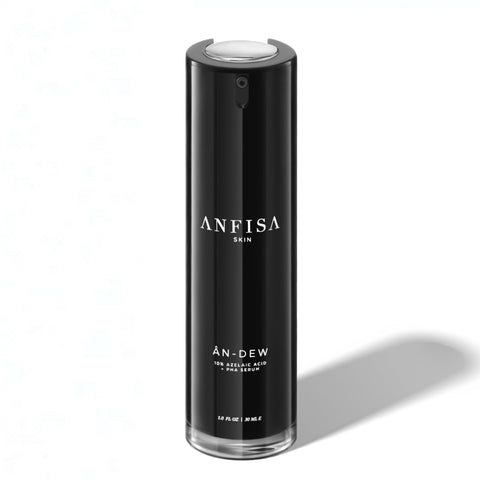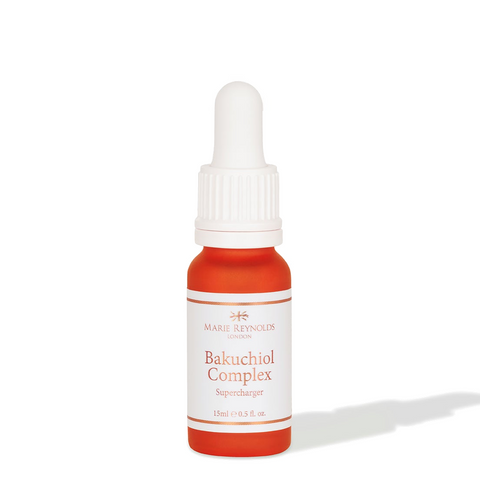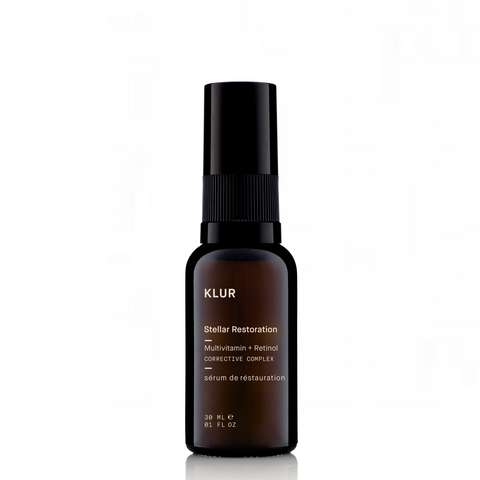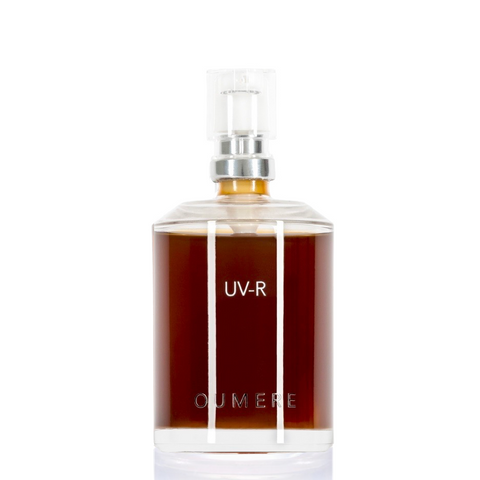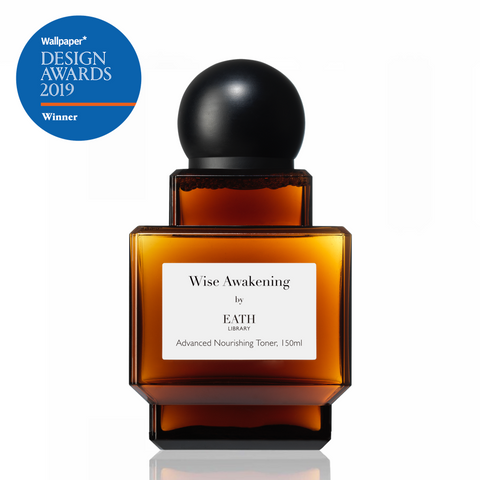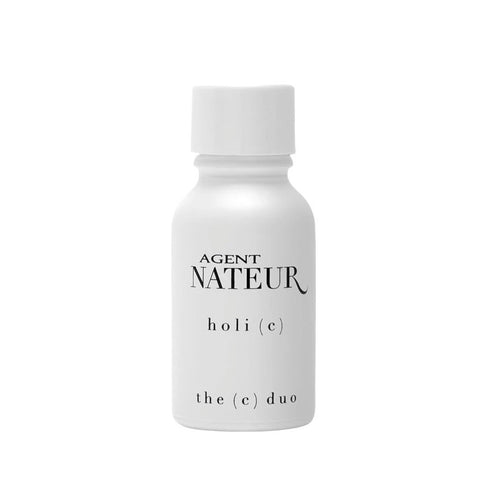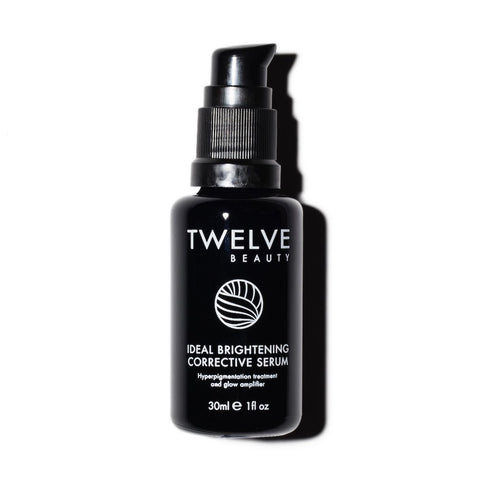Debunking Top 10 Myths About Hyperpigmentation and Skin Brightening
April 10, 2024
We all want to have that even-toned, glass-like, flawless radiant skin, however for most people, not only do acne spots often appear and refuse to go away, hyperpigmentation also appear to increase year by year as we age.
Today, let's debunk the top 10 myths about skin brightening and hyperpigmentation to help you correctly fade and prevent these dark spots, and get your even, spotless, radiant complexion back!!
UV rays are indeed one of the main culprits for pigmentation, but free radicals, heat, pollution, allergens, friction on the skin (such as excessive cleansing, using facial cleansing devices, vigorously rubbing the skin with towels or cotton pads, aggressive skincare routines and makeup application, picking at acne, blackheads, or whiteheads, restless sleep, etc.), hormonal fluctuations (such as pregnancy or taking birth control pills) etc., can all cause skin inflammation. As part of the immune response, the skin sends signals to the melanocytes, prompting them to produce an excessive amount of melanin.
These damages start accumulating from the moment we are born and eventually result in the formation of pigmentation. Depending on genetics, metabolic rate, hormonal factors, environmental influences, and the promptness of treatment and prevention, and with some lucky, pigmentation may not become visible for some people until their 30s or 40s. For some, unfortunately, they can potentially appear as early as in their 20s.
Here's an extremely simplified version of how pigmentation is formed.

- UV rays, pollution, irritants, inflammations, etc. stimulate the production and release of melanocyte-specific factors.
- Tyrosinase activity is stimulated, and melanin production in the melanosomes becomes active within the melanocytes, thus increasing the number of darkened melanosomes.
- Once the melanosomes darken and mature, they move from the melanocytes to the epidermal cells in large quantity.
- The epidermal cells filled with matured melanosomes then slow down turnover, and accumulate at different layers of the skin.
- Darkened epidermal cells remain in the epidermis, thus making the skin appear darker.
In other words, when pigmentation becomes visible, it could only mean that there are tons of already pigmented cells accumulated at all layers of the skin. And because melanocytes are literally being stimulated every single day, matters will only get worse.
Melanin production begins in the deeper layers of the skin, and then naturally rises to the surface where it concentrates and become what we perceive as pigmentation. The skin is constantly regenerating, which means the pigmented cells will eventually shed off. Unfortunately, melanin tends to form faster than it is shed away, thus if left accumulated, pigmentation issues will become deeply rooted and hard to improve.
What this means is, there are two key categories in improving hyperpigmentation: treatment and prevention.
Product Recommendation
KLUR
Brilliant Light Multi-Correctional Repair Serum <- Click to Shop
Product Recommendation
EATH LIBRARY
The Pure Wonder Active Serum <- Click to Shop
Firstly, we've mentioned how melanin production begins in the deeper layers of the skin, then naturally rises to the surface where it concentrates and become what we perceive as pigmentation, then as the skin regenerates, the pigmented cells will eventually shed off. Now, it takes around 21-28 days on average for our healthy cells to renew themselves in our 20s; this process gradually lengthens to 28-45 days in our 30s, 45-60 days in our 40s, and 90 days plus in our 50s-60s. This essentially means, fading pigmentation in 7 days is biologically and dermatologically impossible.
Secondly,a lot of products on the market simply use light-reflective or camouflaging ingredients in their formulas to trick the eyes and give you a false sense of lightened hyperpigmentation or even skin tone. Ever feel like once you stop using a certain product, the hyperpigmentation instantly comes back, and skin seems less radiant? Well of course, because they never went away in the first place!
Thirdly, many poorly formulated brightening products contain bleaching chemicals such as mercury. Due to their corrosive nature, they can indeed lighten pigmentation and acne spots in a short period of time. However, this forced process can damage the skin's protective barrier, as well as disrupt the red blood cells in our skin cells. This can lead to a decline in metabolic function, increased melanin deposition, thinning of the stratum corneum, and the development of allergies, redness, and is even carcinogenic.
Here's the honest truth. Pigmentation are not like stains on clothes that can be removed with a few applications of stain-removing detergents. They are more like layers of an onion——without early and sufficient preventive and corrective measures, the longer the accumulation of melanin, the longer it will take to lighten them.
Product Recommendation
ANFISA
ÂN-DEW™ 10% Azelaic Acid + PHA Serum <-Click to Shop
Product Recommendation
MARIE REYNOLDS LONDON
Bakuchiol Complex Supercharger <- Click to Shop
Just because it’s cloudly does not mean you’re not exposed to UV. While UV levels are highest under cloudless skies, and cloud cover generally reduces a person's exposure, light or thin clouds have little effect and may even enhance UV levels because of scattering. Even a long stay in open shade, for example between buildings and under a sun umbrella, may result in sun burns.
Many surfaces also reflect UV radiation and add to the overall UV levels you experience. For instance, grass, soil and water reflect less than 10 per cent of UV radiation, beach sand reflects about 15 per cent, sea foam about 25 per cent, and fresh snow almost doubles a person's UV exposure.
Staying indoor does not mean you could skip sunscreen either. Glasses used typically in car, home and office windows are designed to block most UVB rays, but it does not offer protection from all UVA rays. So even if you’re indoors but as long as you’re close to a window, you still run the risk of UVA exposure and skin damage. In fact, studies have shown that, for those that drive on the left, sun damage is significantly worse on the right face and right arm, and vice versa.
In other words, in order to avoid pigmentation caused by UV rays as much as possibile, it is paramount to use sunscreen every single day in your skincare routine!
Product Recommendation
AGENT NATEUR
holi(sun) SPF50 Tinted Sunscreen <-Click to Shop
Product Recommendation
TWELVE BEAUTY
Artemisia Power Protection Moisturiser SPF50+ <- Click to Shop
Laser treatments can only target and improve existing pigmentation on the surface of the skin, but the pigmented cells accumulated deep in the skin still exist and will slowly rise to the surface. They cannot prevent melanocytes from being stimulated and produce excess melanin either. In fact, studies have found that more than 70% of people who have received laser treatment will see pigmentation reappearing, some even worse than before. This is because many people do not do enough sun and barrier protection after laser treatments, while friction, irritants, pollution, inflammation, hormonal flunctuations can all stimulate melanin production on a daily basis. Thus for pigmentation, laser treatments are not a once and for all solution.
In other words, whether or not you are doing laser treatments, in order to return the pigmented cells deep in the skin to their original state, and prevent further production of excess melanin, daily brightening and anti-inflammation care are actually a must besides sunscreen.
Product Recommendation
KLUR
Stellar Restoration Corrective Complex <-Click to Shop
Product Recommendation
OUMERE
UV-R™ <- Click to Shop
As you see from the above image, darkened and matured melanosomes move from the melanocytes to the epidermal cells in large quantity, then slow down turnover, and accumulate at different layers of the skin.
Now, these epidermal cells filled with darkened melanosomes do not just disappear. They need to move from deep in the skin to the skin surface and then shed off, so that the newer cells without these darkened melanosomes can rise to the surface, which, in our eyes, equals to the fading of pigmentation. Thus, it is absolutely natural for pigmentation to appear darker as the pigmented cells rise to the surface to be shedded. This is just how the skin works and the natural process of pigmentation fading.
This is most apparent if the brightening product you use can stimulate cell turnover to help the pigmented cells to leave the skin. If you stop using it as soon as the pigmentation appears to darken, then the cell turnover would once again slow down and the pigmented cells would keep accumulating in the skin. So keep pushing through it.
Product Recommendation
AGENT NATEUR
acid(wash) Lactic Acid Brightening Cleanser <-Click to Shop
Product Recommendation
EATH LIBRARY
Wise Awakening Advanced Nourishing Toner <- Click to Shop
This misconception likely came from ascorbic acid (aka pure vitamin C), which quickly oxidizes and changes color when exposed to sunlight.
In the past, the main ingredient in brightening skincare was ascorbic acid (and still one of the most widely used brightening ingredients). Due to its low stability, it does indeed oxidize and change color when exposed to sunlight, which can give the impression of skin darkening when applied to the skin and left on for a while.
However, in reality, vitamin C does not absorb light and is an excellent antioxidant. It effectively fights against free radicals, protects the skin from cell damage caused by UV rays, and is considered one of the essential daytime skincare ingredients. All you need to do is choose other forms of vitamin C, such as sodium ascorbyl phosphate, which do not have the same oxidation issues as ascorbic acid.
Additionally, vitamin C is not the only efffective skin brightening ingredients. Besides retinol and certain alpha-hydroxy acids (AHAs), which are more suitable for nighttime use, other brightening ingredients, such as polyhydroxy acids (PHAs), azelaic acid, ellagic acid, ferulic acid, niacinamide (vitamin B3), hexylresorcinol, and various plant extracts are all suitable for daytime use and can effectively reduce cell damage caused by UVA exposure!
Product Recommendation
TWELVE BEAUTY
Ultra Revitalising Elixir <- Click to Shop
Product Recommendation
AGENT NATEUR
holi(c) The C Duo <- Click to Shop
This misconception also often stems from Ascorbic acid (aka pure vitamin C). Ascorbic acid needs to be at a pH below 3.5 to maintain its efficacy, making it highly irritating and damaging to the skin barrier, as it can lead to acne, blemishes. and even sensitivity, peeling, redness, and stinging issues. Therefore, it is indeed not suitable for sensitive, inflamed, or acne-prone skin (and generally not recommended for healthy skin in the long term).
Remember, ascorbic acid is not the only skin brightening ingredient out there. In addition to the aforementioned ingredients, other ingredients such as iridoids, cornus fruit, ginsenoside, licorice root, noni, mallow, yarrow, broccoli sprout, hawkweed, daisy, pearl powder, resveratrol, and more, in fact, have soothing and anti-inflammatory properties that are great and safe to use for sensitive skin!
Product Recommendation
EATH Library
All Day Radiance Light Concentration Cream <-Click to Shop
Product Recommendation
TWELVE BEAUTY
Ideal Brightening Corrective Serum<-Click to Shop
Some brightening skincare ingredients promote cell turnover to help accelerate the shedding of pigmented epidermal cells. Because this process involves the shedding of old cells, it is possible to initially experience slight dryness in the skin.
However, with advancements in skincare technology in recent years, many skin brightening products have incorporated sufficient moisturizing and hydrating properties to prevent skin dryness. In other words, as long as they are used correctly, dryness is generally unlikely to occur. And even if it does, it will only be temporary.
Furthermore, besides promoting cell turnover, many skin brightening ingredients in fact, have hydrating and soothing effects. Therefore, dryness shouldn't be a concern at all.
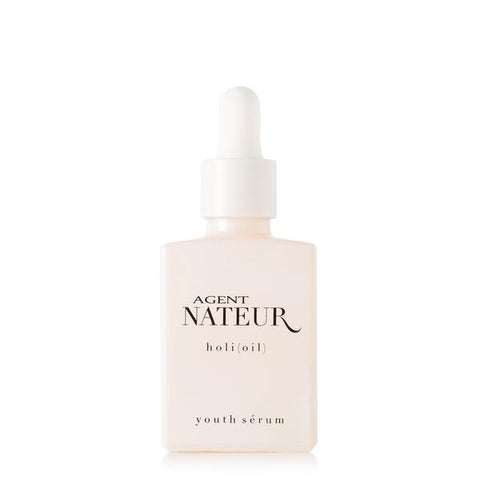
Product Recommendation
AGENT NATEUR
holi(oil) Ageless Face Oil <- Click to Shop
Product Recommendation
KLUR
Sculpture + A Overnight Enrichment Cream <-Click to Shop
Food is natural, so people probably think it is the healthiest, non-toxic way to care for the skin. However, those who really know how to care for their skin would never ever DIY. The only exception would be using Aloe Vera to soothe skin.
Firstly, food in your kitchen would not do anything topically for your skin. This is because when you eat something, your saliva starts to break down the food, which then goes through your digestive system so the nutrients from the food can be distributed throughout the body where it is needed. The skin does not have anything that resembles a digestive system, meaning, it cannot break down the food you put on your face, and the nutrients cannot get into the skin. In other words, you are just wasting food, effort and time.
Secondly, while many of the ingredients in your skincare products come from natural sources, such as plants, they are not exactly what you find in your kitchen. For instance, the most nutritious parts of the plants are the stems, seeds, and roots. These get extracted and processed in ways so that together with a robust delivery system within the product formula, they can actually penetrate the deepest skin layers. They also go through many testings so that the composition of the extracts and every constituent in them are known to ensure performances, safety and consistency.
Thirdly, pH is another very important factor in skincare products——different products are at different pH levels for very specific reasons. For example, you may have heard milk contains lactic acids, and that you can use it in a mask or add it to your bath to exfoliate, brighten skin, and smooth the skin. Sorry to burst your bubble, but not only is it not in an absorbable form that the skin can use, the pH of milk is 6.5. For any acids to break down the bond of dead skin cells and provide exfoliating actions, they have to be at a pH range of around 3.0 to 4.0. When the pH of the milk is even higher than your skin, what do you think will happen? Absolutely nothing.
Lemon juice is even more problematic! The skin's surface is healthiest at a pH of 4.7, and typical acid-based exfoliating ingredients have a pH range of 3.0 to 4.0 (and the skin takes about 30 minutes after application to return to its normal pH). However, lemon juice has a pH as low as 2, making it highly irritating when directly applied to the skin. Additionally, when the skin comes in contact with coumarins and furocoumarins present in lemon and is exposed to UVA, these substances then become phototoxic, which then leads to a cell-mediated immune response and darkening of the skin. There is also a very high chance of developing contact dermatitis and post-inflammatory hyperpigmentation.
Product Recommendation
Agent Nateur
holi(bright) Resurface Glass Face Mask <- Click to Shop
Product Recommendation
OUMERE
No. 9 Exfoliant <- Click to Shop
Also in The Journal

The Anti-Aging Gold Standard: How Retinol Reshapes The Skin
November 12, 2025
Learn why retinol is the gold standard for anti-aging, how it works, what similar ingredients exist, and some common myths and misconceptions.

The Gut-Skin Connection: The Path to Healthy Skin
October 26, 2025
Acne, eczema, rosacea, and sensitivity can all be linked to the gut health, and even gluten? Learn all about the connection between the gut and the skin.

The Secret to Reversing Skin Aging! How Growth Factors & Peptides Help Turn Back the Clock
October 13, 2025
Tired of wrinkles, sagging skin, lack of elasticity, inflammation, dryness, and even hair loss? Learn how growth factors and peptides reverse skin aging.
+Recent Articles
-
The Anti-Aging Gold Standard: How Retinol Reshapes The Skin
November 12, 2025
-
The Gut-Skin Connection: The Path to Healthy Skin
October 26, 2025
-
The Secret to Reversing Skin Aging! How Growth Factors & Peptides Help Turn Back the Clock
October 13, 2025
-
The Best Ways and Times to Take Different Supplements
August 19, 2025
-
Luxury vs. Budget-Friendly Skincare Products——What Are Their Differences?
August 06, 2025
-
How to Prevent and Improve Post-Inflammatory Hyperpigmentation (PIH)
July 10, 2025
-
How to Prevent and Improve Post-Inflammatory Erythema (PIE)
July 08, 2025
-
The Ultimate Cleansing Guide to Improve Skin Conditions
June 03, 2025
-
Do You Have Sugar Face? How Does Sugar Affect Our Skin and Appearance?
May 20, 2025
-
Do You Have Gluten Face? How Does Gluten Affect Our Skin and Appearance?
April 15, 2025
Subscribe to get skincare knowledge delivered to your inbox!




